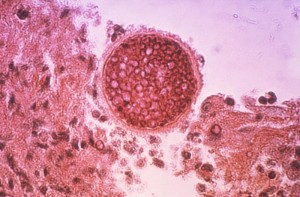 Earlier this week, a big event happened in Bakersfield, California where federal, state, and local officials met for a Valley Fever symposium. The symposium was led by California Congressman Kevin McCarthy. Rep. McCarthy was joined by Arizona Congressman David Schweikert, co-chair of the House of Representatives Valley Fever Task Force, Dr. Thomas Frieden, director of the Centers for Disease Control and Prevention (CDC), and Dr. Francis Collins, director of the National Institutes of Health (NIH) as well as many other agency and community representatives.
Earlier this week, a big event happened in Bakersfield, California where federal, state, and local officials met for a Valley Fever symposium. The symposium was led by California Congressman Kevin McCarthy. Rep. McCarthy was joined by Arizona Congressman David Schweikert, co-chair of the House of Representatives Valley Fever Task Force, Dr. Thomas Frieden, director of the Centers for Disease Control and Prevention (CDC), and Dr. Francis Collins, director of the National Institutes of Health (NIH) as well as many other agency and community representatives.
Staff members from ADHS and local experts also attended. Dr. Peter Kelly from our Bureau of Public Health Emergency Preparedness gave a presentation on Valley Fever in Arizona and the activities that we’ve been doing in partnership with the Valley Fever Center for Excellence at the U of A and county health departments to raise awareness about Valley Fever among healthcare providers and the general public, including through the upcoming Valley Fever Awareness Week.
The most exciting outcome from this event was an announcement by the NIH to do a study on the best way to treat Valley Fever, which is not well understood. Some people seem to get better without any treatment, while others greatly benefit from it. The antifungal treatment used (mainly a drug called fluconazole) can also cause bad side effects. The study will be a double-blind randomized controlled trial, which means that half of patients with Valley Fever pneumonia (serious disease of the lungs) will receive an antifungal drug while the other half will receive an antibiotic, which is not the right treatment for Valley Fever.
About 1,000 patients will be assigned to these groups randomly and neither doctors nor patients will know who is receiving the antifungal and who is receiving the antibiotic. These types of studies are considered the best way to figure out what the best treatments are for a certain disease.
Our folks in the Office of Infectious Disease Services will be working with the CDC and the California Department of Public Health in the coming months to help with the NIH investigation. Many details still need to be worked out. The trial will take several years and will cost millions of dollars. We are hopeful that it will finally answer questions about Valley Fever treatment and bring us closer to a cure. Stay tuned for more information and check out our Valley Fever web page for updates.









